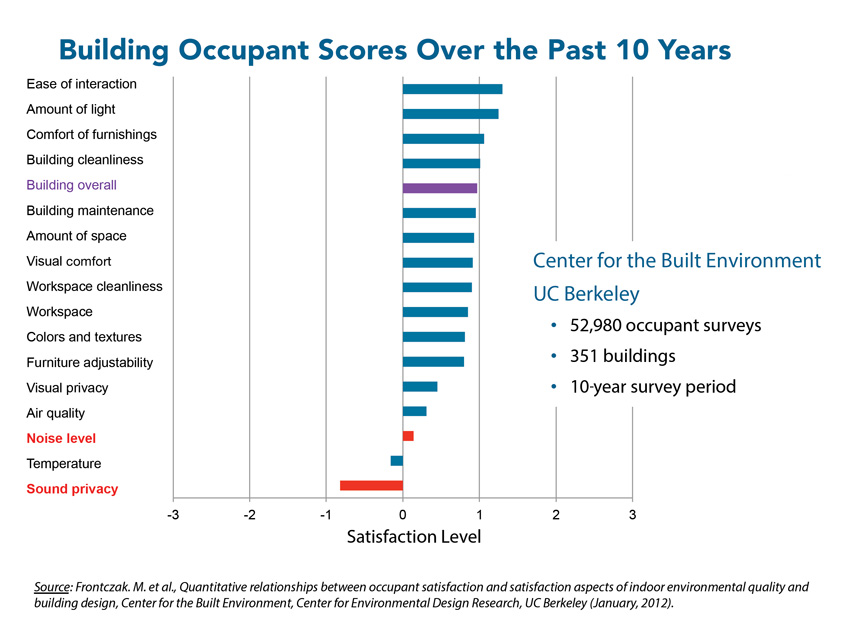Optimizing Acoustics for Effective Sound Design and Performance
Acoustics in Building Post-Occupancy Surveys
As we begin to assess the progress made in attenuating negative impacts of noise in buildings, the question to ask is, “How have we done over the past 10 years as an industry?” To find the answer, we can evaluate the data from post-occupancy building surveys to determine if the past acoustic design approach has been providing adequate results.
The Center for Built Environment at UC Berkeley (CBE) has the most extensive ongoing building occupant survey database in the world, giving us the resources to determine whether or not the industry needs to change direction. The CBE published a status report in 2012, which looked at almost 53,000 occupant surveys for 351 buildings over a 10-year survey period. What the data revealed was that overall, occupants were somewhat satisfied with their buildings, with a satisfaction rating of almost 1 (on a scale from -3 to +3) from dissatisfied to satisfied.
While certain categories get high ratings for satisfaction (e.g., ease of interaction, amount of light, comfort of furnishings, cleanliness), there are a few metrics that are anchoring the satisfaction ratings down. The surveys show the highest levels of dissatisfaction surround sound privacy, temperature, and noise level.4
With this data in hand, it’s hard to conclude that the industry should continue the same acoustic design approach in future buildings, compelling us to look at options for a better route to optimal acoustic design.

Overview of Acoustics Standards and Guidelines
In recent years, there has been a noticeable increase in standards, guidelines, and building rating systems with acoustics sections in them, governing what architects need to do, and making acoustics and noise control more important within the context of the whole building design.
For an increasing number of project types, you may not have the choice whether or not you’re going to take a different acoustic design approach in the future. The main trend we’re seeing in the standards, guidelines, and rating systems is more stringent acoustic requirements, both in absorption and blocking/isolation.
Overarching Trends
Most of these current codes, standards, guidelines, and building ratings systems that include acoustics sections are building-type specific (see sidebar), and an optimized acoustic design approach can lead to compliance from multiple perspectives, specifically in the following areas:
- Helping to meet maximum permissible reverberation times or minimum NRC ratings
- Helping to attenuate exterior noise that has transmitted through the building envelope
- Helping to attenuate mechanical, electrical, plumbing, fire protection (MEPF) system noise that has entered the occupied rooms of the building
- Helping to control sound transmission between rooms









